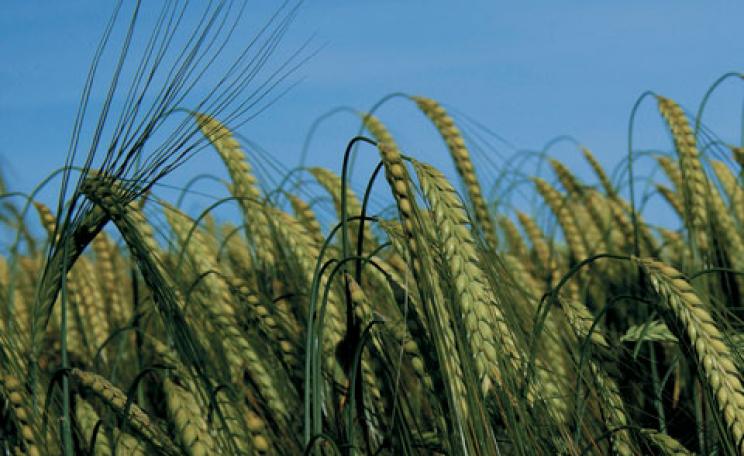The flavour of the eggs and meat from a home-reared bird bears no relation to any mass-produced specimen
I would thoroughly recommend a few fowl to any would-be home producer. It takes a lot to beat a free-ranging brood of hens, or even a paddling of ducks, a gaggle of geese or a rafter of turkeys.
They are fun to keep and create an atmosphere of frenetic energy with their industrious search for food, their squabbling, egg-laying and dust bathing, and the way they vocalize all their activities with raucous exuberance.
Housing
Chickens are a woodland bird and, assuming your vegetable and flower garden is rabbit-fenced, your chickens will thrive best running free, hunting for food in rough grass, eating weed and grass seeds, and scratching for insects. During the summer this is all they need, plus a little mixed grain and some scraps to keep them manageable.
Their housing is obviously of paramount importance. The main requirement for poultry is that they are protected from predators and the weather, and that they have adequate ventilation. They need to feel safe and comfortable. Like all stock, chickens are prone to stress and their performance will drop off if they are unhappy. Lastly, though it is a secondary consideration to the welfare of the birds, the hen house should be easy for you to use.
Some people may have redundant farm buildings which could be converted into poultry housing but generally speaking these tend to be too close to the house and away from the area where the hens should be grazing. In any case, I like to see chickens with their own house.
There are plenty of companies making poultry housing that is ideally suited to the smallholder. I would recommend a solid, decent-sized, purpose-built freestanding shed with skids on the bottom so it can be dragged to a clean new site when necessary. It must be easy for you to get in and clean and so will need a door for your own access. I suggest having a hen house that is 1.5m square and 1.68m high at the front, sloping to 1.42m at the back. It should have a wooden roof covered with tarred felt. In addition you will need a ramp and hatch for the hens, and lighting. This is particularly important if you live in the north where the days are shorter and if you want an extended laying period. You will also need a 12-litre plastic drinker and an ad-lib galvanized feeder that can be attached to the inside of the door, plus a broody coop and integral run, and 40cm deep external nesting boxes complete with a hinged lid. Be sure to position the hen house on a dry, free-draining site.
Breeding
You have various options for starting a flock. These include hatching eggs under an incubator, rearing chicks or buying half-grown pullets or point of lays - birds that are ready to lay - in September. I would suggest buying point of lays. A cockerel and eight hens is a good starting point for a dual-purpose family-sized enterprise.
Make your purchase either privately, at an auction or through one of the many businesses specializing in poultry and poultry equipment. When you get your hens and cockerel home, shut them in the hen-house for four days so they can become acclimatized, making sure that they have plenty of food, fresh water, a little hay in each nesting box and small, clean wood shavings on the floor. On the morning of the fifth day, open their hatch, scatter a little feed down the ramp and let them find their way out. Feed scraps and a little wheat in the afternoon near the shed, so they get used to the idea of being in its vicinity when it comes to shutting them before dark.
The flavour of the eggs and meat from a home-reared bird bears no relation to any mass-produced specimen
Realistically, pure-bred dual-purpose pullets are unlikely to give many eggs before the spring, particularly if the home producer lives in the north. Sunlight influences a hen's productivity and as the hours of daylight diminish, fewer eggs are laid. I have childhood memories of the bottling activities of the autumn. We preserved the eggs in isinglass - a form of collagen made from the swim bladders of certain tropical fish and still used today as finings in the brewing industry - and stored them in big glazed earthenware crocks for the lean winter months. My hens in southern Scotland tail off into November and start again in early February, with just one or two laying sporadically through that period. To ensure a flow of eggs during winter, create daylight artificially by using a timer to set an electric light to come on for a few hours before dawn and then again at dusk.
I feed my hens standard layers pellets from the ad-lib feeder in the hen-house during the summer, plus wheat and household scraps in the afternoon. I increase the wheat by feeding them twice a day during the winter period. In spring and summer, in addition to the layers pellets, my hens get a large percentage of their protein from insects and weed seeds. You also need to give the hens access to grit to help eggshell production. They like a dustbath to clean their feathers and help get rid of mites and will find their own if they are running around freely. As long as the hen-house is cleaned out scrupulously, your hens will be disease-free.
With egg production starting in the spring, the second phase of the dualpurpose poultry enterprise begins when one of the hens turns broody, squatting on the nest with tail feathers erect, refusing to move and clucking in outrage at being disturbed. Now it is time to prepare the broody coop by cutting a turf, turning it over, making a depression in it, covering it with broken straw and putting it inside. Move the broody and her eggs into the coop. Fresh water, grit and a dustbath made of dry soil, ash and sand should be made available in the run together with a daily feed of wheat.
Eggs take 21 days to hatch and for the first ten, shut the hen off the nest for twenty minutes while she feeds. For the next eleven days, keep her off for 30 minutes. While she is feeding, turn each egg to stop the foetus adhering to the side of the shell and check that the turf remains damp. Always feed her at the same time each day.
After hatching
When the chicks hatch, they should not be fed for at least 48 hours while they live off the membrane that is left in the egg. Then they need plenty of fresh water and chick-crumbs feed pellets for a month. Divide the run with a slatted partition to keep the hen separate and move the divider every day to give the chicks some fresh ground.
How you look after the chicks from now on depends on the amount of time you are able to devote to them. My view is that the sooner they get out and learn to forage with the hen the better. They will scuttle about the place with her and she will hide them away at night in some long grass. As they become older, they will begin to feed with the rest of the hens and will be roosting with them in the hen-house by the autumn. There is obviously the risk of predators when you have young chicks running about like this; the alternative is to keep them in an enclosure, feeding them growers pellets for up to 14 weeks.
How many hens you allow to turn broody and rear a clutch depends on the number of table chickens you require. Of an average clutch of ten, roughly half will be young cockerels. To take a hypothetical example, three hens will supply fifteen pullets and fifteen cockerels in the spring and early summer. The cockerels will all be killed in the following autumn and winter. In January the flock will stand at 33 hens of which eight will be entering their most productive second year, to be culled as boiling fowls at the end of it. Seven pullets or a combination of pullets and second-year hens that have proved to be poor layers will be surplus to requirements and could be culled. When more hens than are required for breeding turn broody, a trick to stop them is to feed them in a small wire or slatbottomed coop raised off the ground. This is so uncomfortable that within a few days they lose the desire to squat and within a fortnight will return to laying.
Young cockerels from the brood will be ready to eat at eighteen weeks. It is well worth putting a couple in the broody coop and fattening them for a fortnight on a thrice daily feed of a fattening ration. The same applies to the boilers that have passed through their second laying season.
When handling a chicken, pick it up by the body with the wings closed. If they can't flap their wings, they remain quite calm. Place the bird under your right arm and press her gently against your body so the wings are kept closed, and hold her feet together with your hand.
To kill a chicken, hold it as described, take the head in your left hand and in one fluid motion, jerk the right hand back and the left hand down, twisting the head to the left. The neck will snap instantaneously as the body is pulled rigid. Hang it up by the legs until cool and pluck.
Choosing a breed
There are so many breeds of chicken available today, thanks to the nineteenth-century craze for exotic breeds and the endless experimentation by geneticists, that a novice is spoilt for choice. My advice is to go for a traditional tried-and-tested, old-fashioned dual-purpose breed. This will provide more than enough eggs for the average family and delicious table birds at two years. Light Sussex are my favourites; they are hardy, independent, great table birds and capable of producing around 200 eggs a year. Rhode Island Reds are another traditional dualpurpose breed, while French Marans are wonderful, slow-maturing table birds and good brown-egg layers. The blue or buff Orpingtons are reliably meaty birds but produce fewer eggs while the white, black and brown Leghorns, Barred Plymouth Rocks, Scots Greys and Wyandottes are all excellent, long-established dual-purpose chickens.
This is an edited extract from A Greener Life by Clarissa Dickson Wright and Johnny Scott (Kyle Cathie, £16.99) with photography by Vanessa Courtier.
Ecologist Readers can buy the book at the special price of £14.99 inc free p&p (UK mainland only). To order your copy, ring: 01903 828503, quoting ref. KC AGL/ECO or email: mailorders@lbsltd.co.uk




